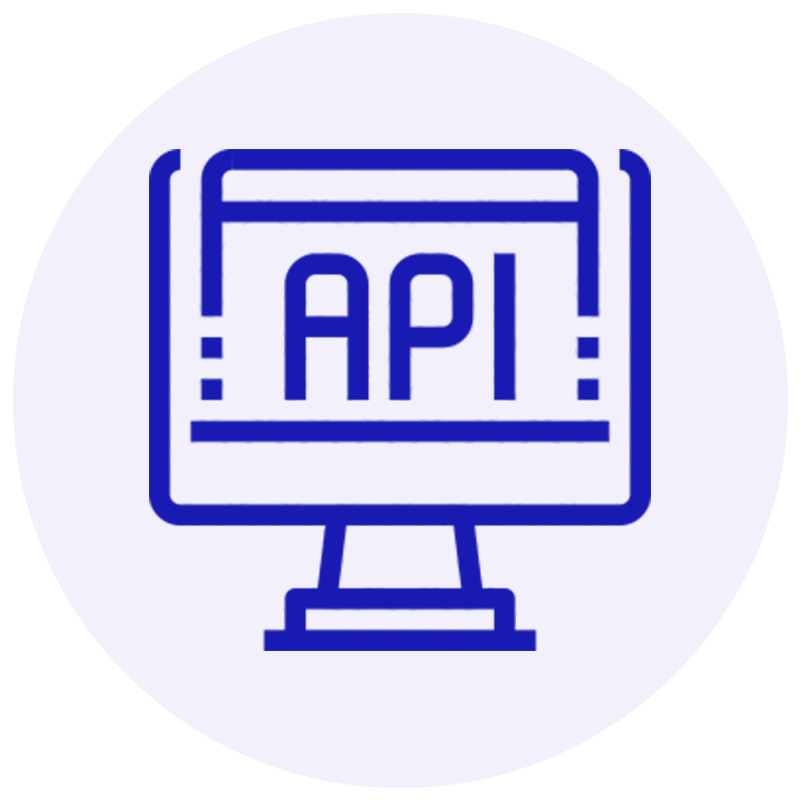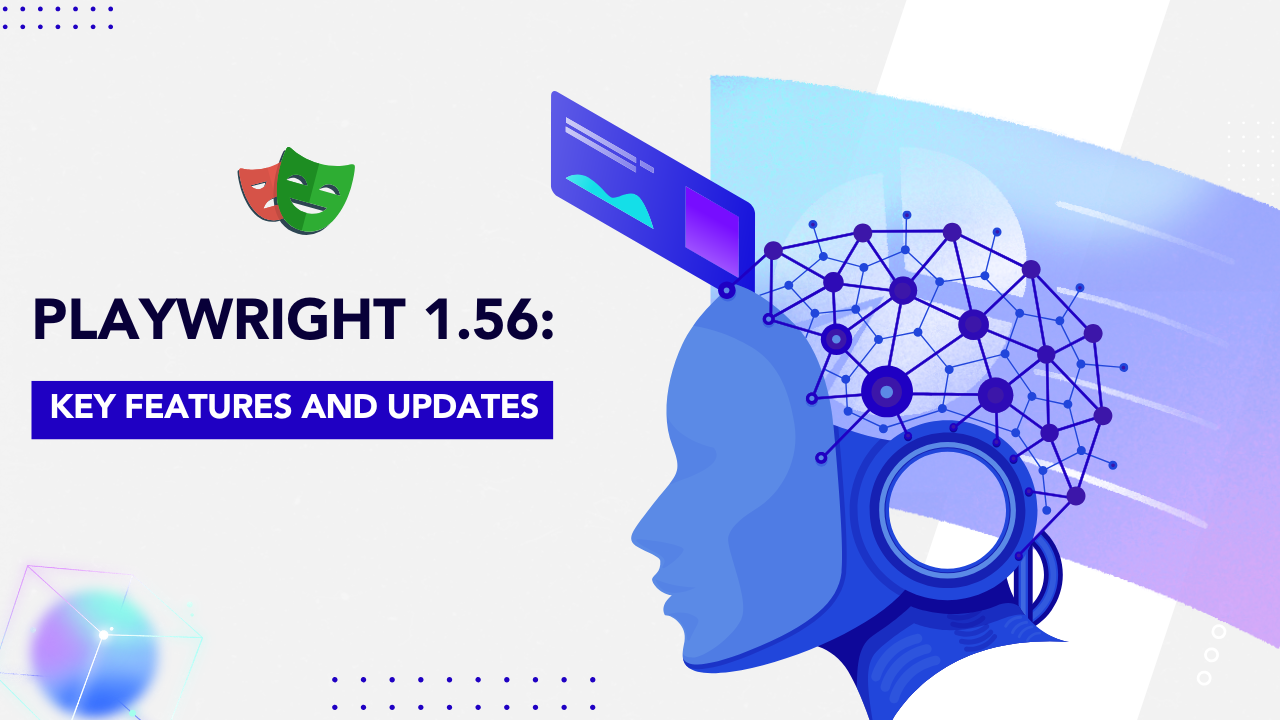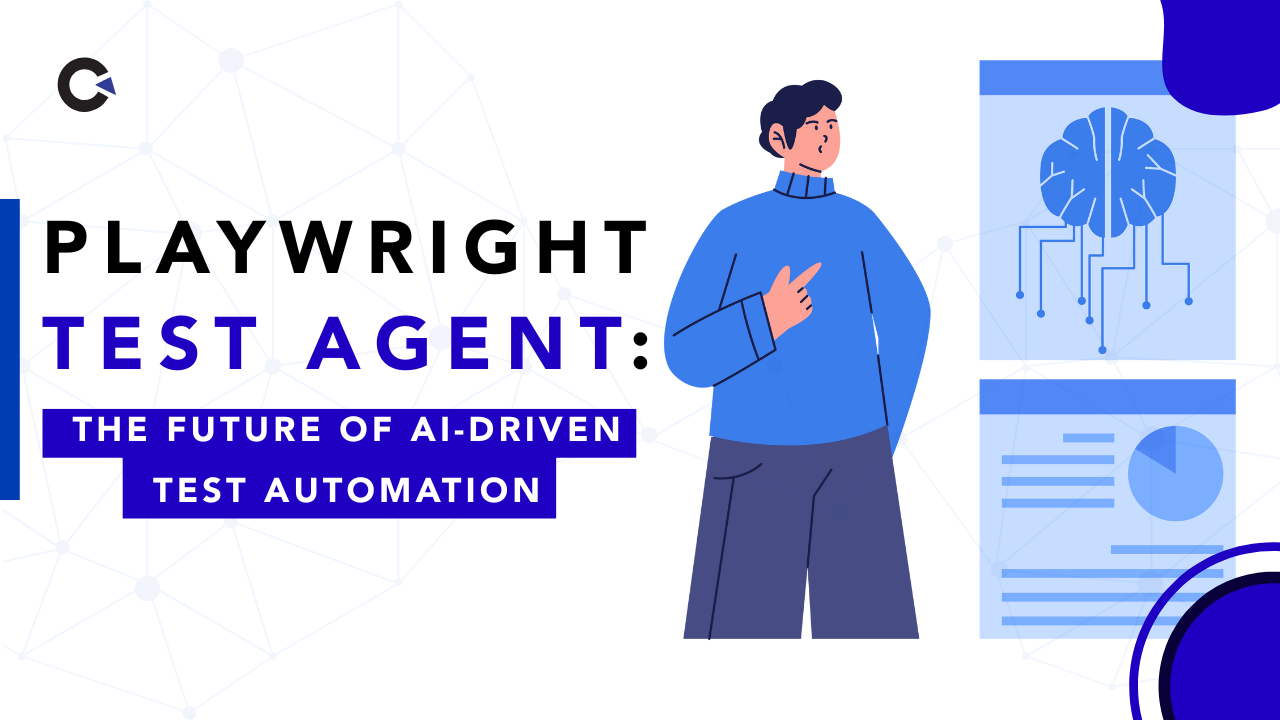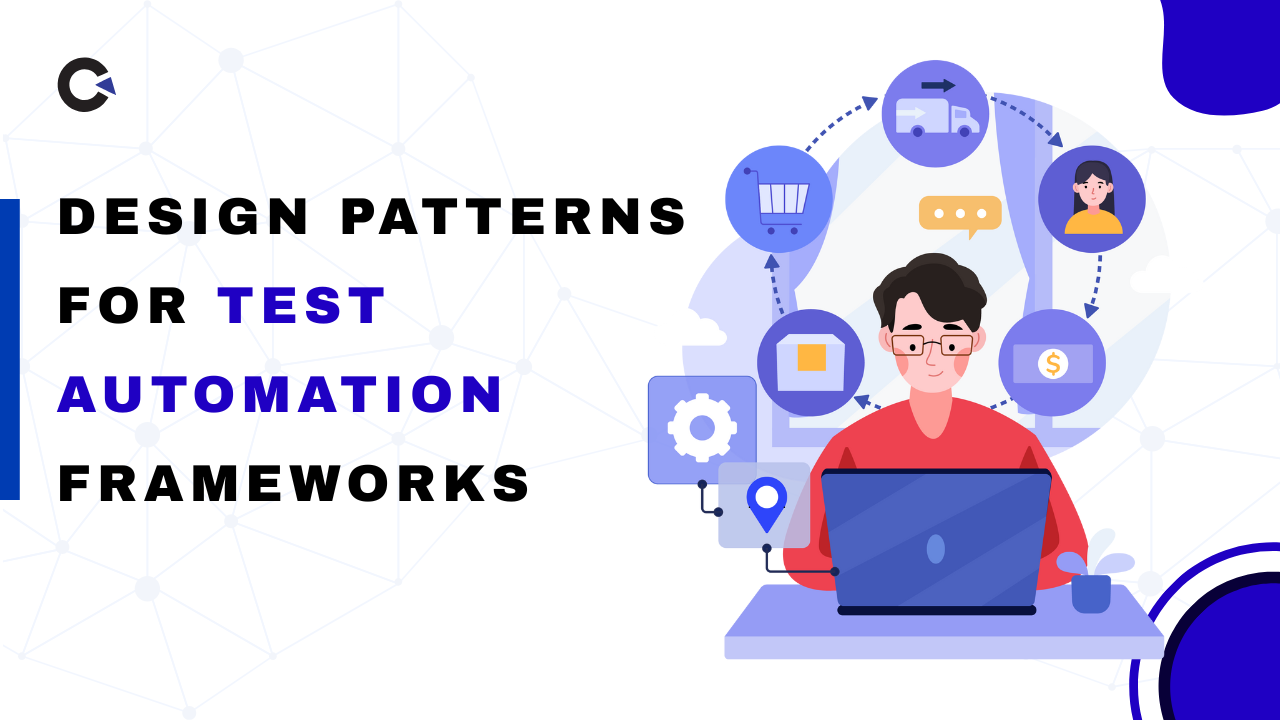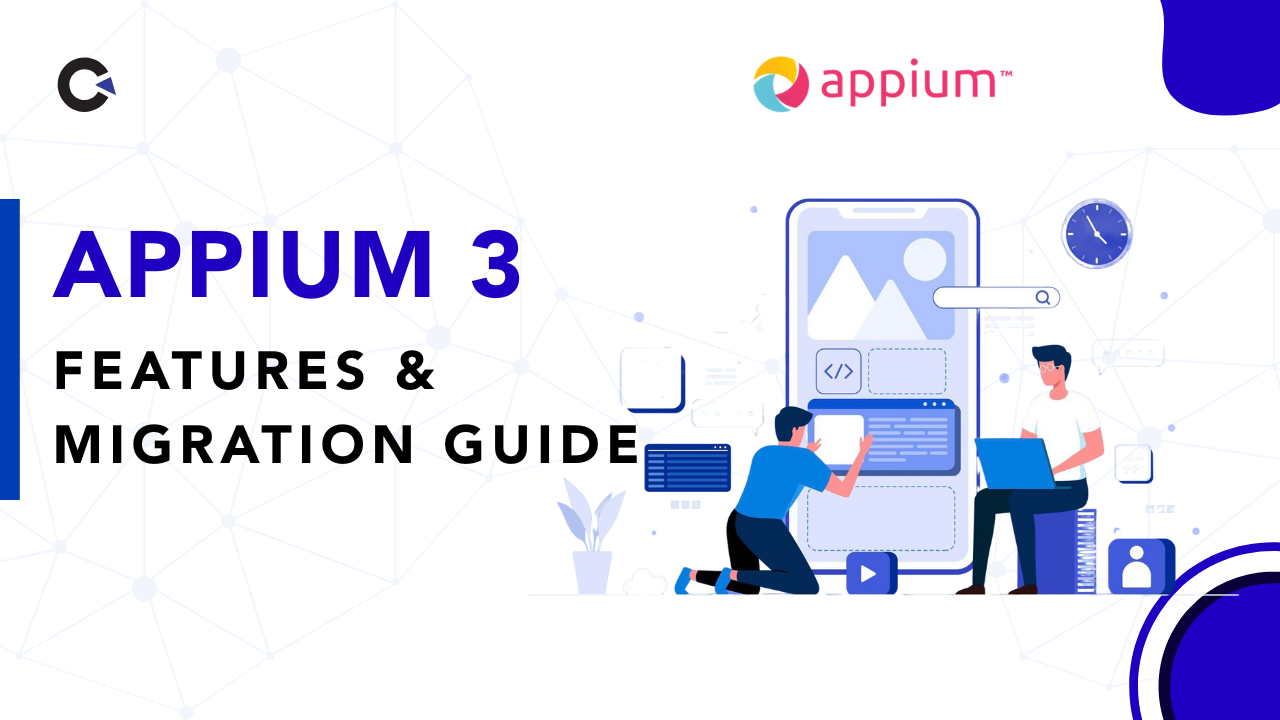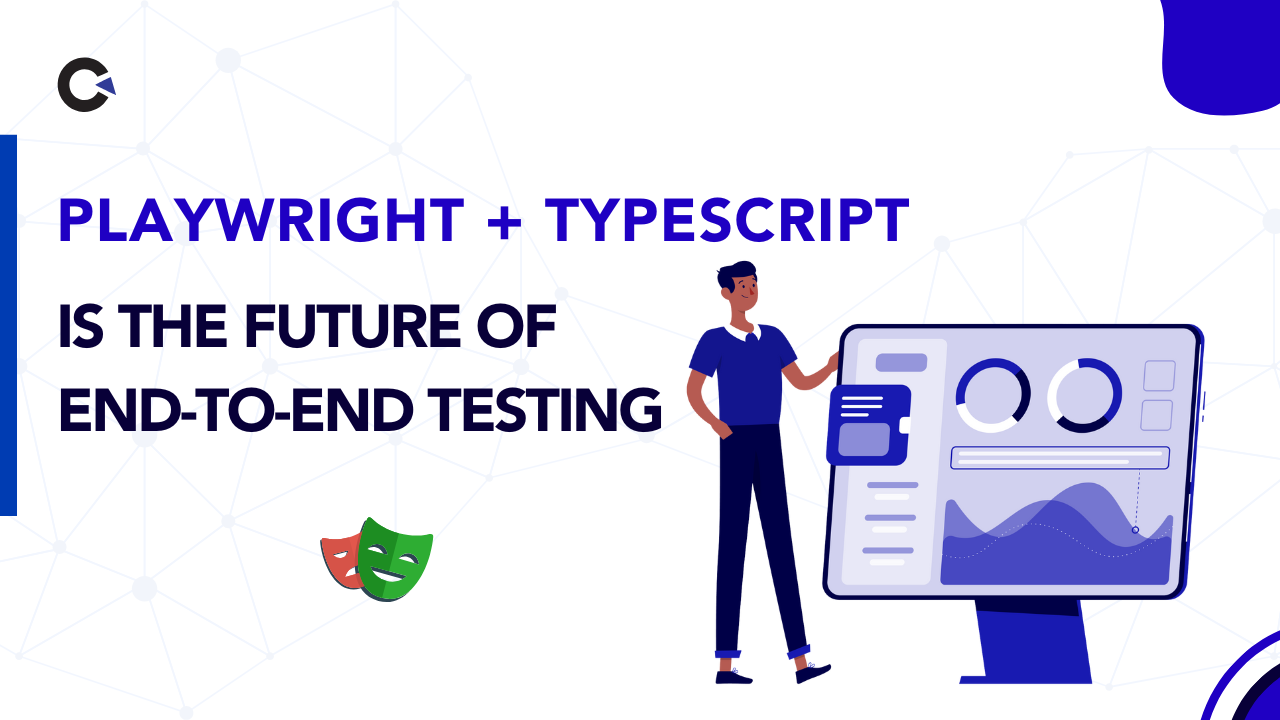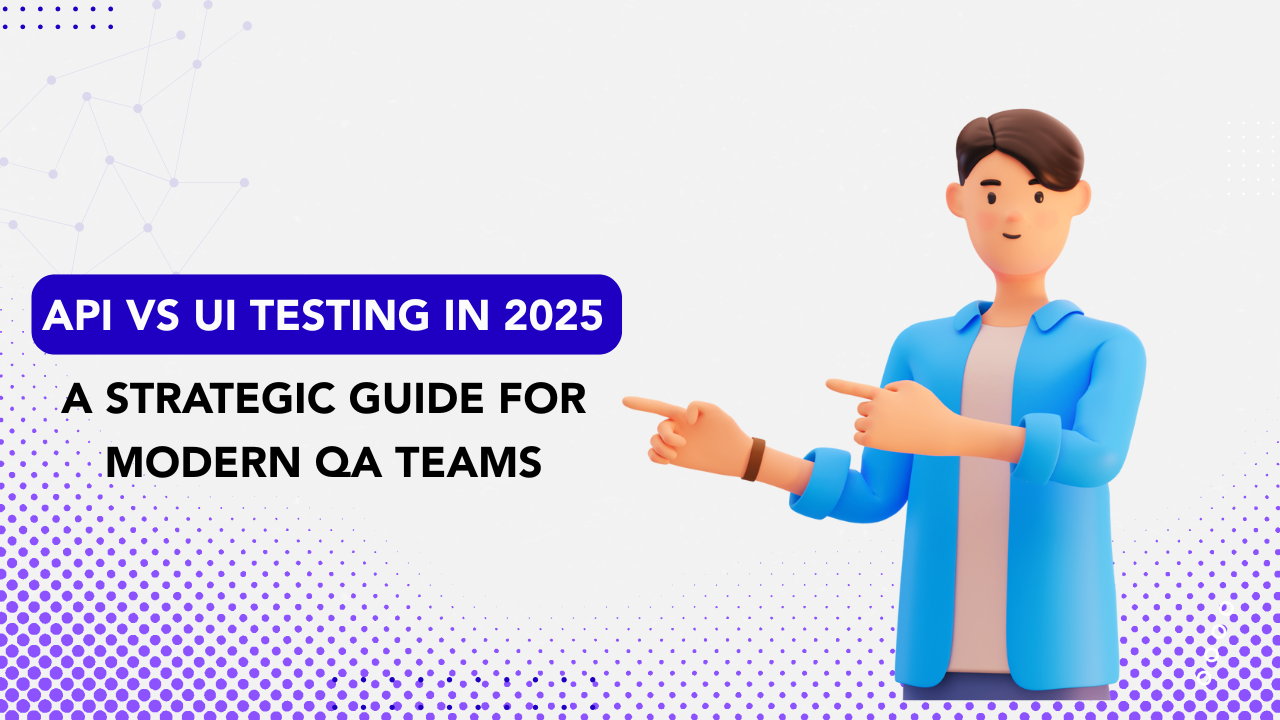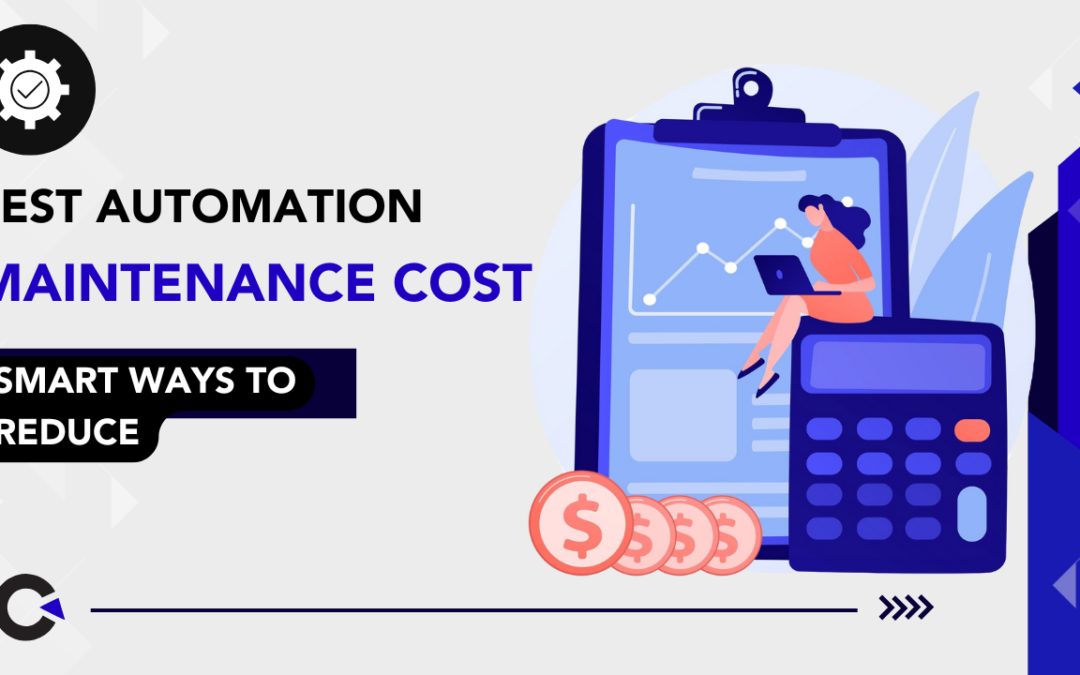
by Hannah Rivera | Jan 12, 2025 | Automation Testing, Blog, Latest Post, Top Picks |
Test automation plays an important role in software development and quality assurance today, especially in the realm of software testing. This includes regression testing. However, if not managed properly, automated test suites can sometimes cost more than their benefits. To reduce test automation maintenance costs and improve maintenance efforts, it’s essential to follow best practices in the testing process and test design. A good approach to coding and fixing software defects during the development process can help lower maintenance work. This approach can also enhance the test plan and make changes easier when needed. By acting early, teams can keep their test automation with a good test automation tool efficient and useful over time.
This article gives helpful tips to lower maintenance costs in Automation Testing Service. It has stories to explain each tip clearly, along with practical advice that you can easily use.
Understanding Test Automation Maintenance Costs
Before we discuss strategies, we need to understand what influences maintenance costs in test automation. Here are some common factors:
- Fragile Tests: These tests often fail due to small UI changes or unstable environments.
- Over-Automation: This happens when we automate tasks that are not necessary, making things more complex without a good return.
- Poor Test Design: This is about tests that are hard to reuse or change, causing the same tests to be repeated several times.
- Flaky Tests: These tests sometimes pass and sometimes fail due to outside factors like timing issues or inconsistent dependencies.
- Misaligned Tools: This is when we use tools or frameworks that do not fit well with our technology setup.
Addressing these problems requires good planning, using technical best practices, and creating a teamwork-focused culture.
1. Build a Strong Foundation with Effective Test Design
A good test design is key for a strong Automation Framework. Poorly designed tests can break easily. They may be hard to repeat and take a long time to fix. To keep maintenance costs down, teams should focus on:
Risk-Based Testing
- Focus your automation efforts on high-risk areas that really matter for the application’s success.
- For low-risk features or ones that are rarely used, manual testing might be enough.
Test Pyramid Principle
Adopt a layered testing strategy:
- Unit Tests: These tests focus on individual pieces of the code. They are fast, reliable, and easy to manage.
- Integration Tests: These tests check if services or modules communicate properly.
- UI/E2E Tests: These tests focus on key workflows, often called “happy paths.” They help lower the chance of having weak UI actions.
Balanced Coverage
- You do not have to automate everything.
- Focus on the most important tasks and times that are hard to manage.
- Add negative tests to ensure that the tests work well.
- This keeps the test suite simple and focused.
2. Write Clean and Maintainable Test Code
Test automation code needs to follow good practices, just like regular production code. If test scripts are poorly written, it can create more work when updates are required.
Layered Architecture
- Organize automation code into simple layers, like.
- Page Objects keep the details of UI elements hidden.
- Helper Methods let us reuse functions easily.
- Data Management Layers take care of managing test data.
DRY Principle (Don’t Repeat Yourself)
- Place actions that repeat into methods or base classes you can use again.
- This helps reduce repetition.
- It also simplifies making new tests.
- For instance, if multiple tests need a login feature, put it in a shared utility.
- This lets you avoid writing the login function in every script.
Use Patterns like POM or Screenplay
- Page Object Model (POM) divides user interface (UI) elements into different classes. This helps keep the test logic apart from the UI locators.
- Screenplay Pattern views user actions as tasks. This provides a clearer picture of each step in a test.
Readable Code
Clear naming rules and good test scripts help team members quickly understand and update tests. This makes it easier for them to manage the tests and lowers costs.
3. Optimize Locators and Application Design
- Fragile locators can cause test failures.
- A strong plan for locators and good teamwork with developers can reduce the need for maintenance a lot.
Stable Locators
- Use tags like data-test-id or aria-label as good selectors.
-
- Avoid weak locators, such as long XPath expressions. They usually break with small UI changes.
Test-Friendly Application Design
- Work with developers to build applications that are easy to test.
- Adding stable IDs or test hooks during development can make automation better.
- This practice makes it less likely to fail.
Minimize UI Dependence
- Try to test functions using APIs or service layers when you can.
- This practice reduces the chances of issues with the UI.
- It also allows you to get faster feedback.
4. Integrate Automation into CI/CD Pipelines
Continuous integration and deployment, known as CI/CD, are essential for keeping automated test groups running smoothly, preventing downtime. A good integration process decreases the need for human work. It also ensures that feedback arrives quickly.
Regular Test Execution
- Automate test runs in CI pipelines to find problems early.
- Running tests often helps catch failures before they turn into bigger issues.
Parallel Execution
- Running tests at the same time makes the tests finish faster.
- This way, you get feedback quicker.
- It is really useful for large test suites.
Smart Test Selection
- Use tools for test impact analysis.
- These tools can identify and run only the tests that recent code changes affect.
- This practice helps to avoid running all tests.
- It saves time and resources.
5. Invest in Robust Reporting and Monitoring
Clear and helpful reports are very important. They help us find and solve problems quickly. If we don’t have the right information, it can take a lot of time and money to understand why tests do not pass.
Detailed Reports
- Look for tools that provide full failure reports.
- Ensure they have all important details.
- Screenshots of tests that failed.
- Logs that show stack traces for fixing problems.
- Old data to track trends.
Monitor Flaky Tests
- Track and find flaky tests.
- This helps keep trust in your automation suite strong.
- Fixing these issues fast will save money on maintenance in the long run.
6. Promote a Culture of Continuous Improvement
Test automation is not a one-time task. It requires constant investment. This supports its ability to adjust to changes in the application and the needs of the business.
Regular Refactoring
- Schedule regular reviews to check for and remove outdated or unnecessary tests.
- Refresh weak scripts to match current standards.
Stay Aligned with Development Changes
- Work closely with development teams.
- Keep an eye out for upcoming changes.
- Modify test scripts as needed.
Encourage Shared Ownership
- Put test automation engineers in development teams. This helps everyone share the job of test maintenance.
- Working together lowers the barriers between teams. It also makes things more efficient.
7. Choose the Right Tools and Technologies
Choosing the right tools is key to keeping costs down in test automation maintenance. The best tools make development, execution, and reporting simpler.
Tool Compatibility
- Pick tools that fit your team’s technology.
- This will help cut down problems when linking systems.
- It will also save time needed to learn how to use them.
Mature Frameworks
- Pick popular tools such as Selenium, Playwright, or Appium.
- These tools have a lot of guides and support.
- Many people use them.
- You can find lively groups around these tools.
- They receive regular updates.
- This keeps them from becoming old and unused.
Cloud and Containerized Environments
Using cloud-based or container environments makes it easier to keep things consistent during test runs. This helps to lessen issues that can occur due to different settings.
Conclusion
Minimizing the costs of keeping test automation solutions up and running needs a full approach. This means careful planning, technical skills, and good teamwork.
A strong test automation strategy helps with web application testing. Good test design, code that is easy to maintain, and stable locators paired with AI testing tools ensure we cover all tests and achieve comprehensive test coverage while evaluating ROI effectively. This cuts down on issues and complexity. It also helps teams deliver new features that enhance user experience (UX).
When adding automation to CI/CD pipelines for web applications, it is crucial to think about the right factors. Paying attention to unstable tests and choosing the right automation tools can make everything more efficient.
A good test automation suite can save you time and money. It helps build trust in how the software is delivered. This practice enhances overall QA methods. Regular maintenance is an important long-term investment. It helps keep new features stable in the app. When done correctly, test automation is a vital tool. It allows for faster release cycles and higher quality software. This gives teams extra time to innovate, especially when they look at test results.
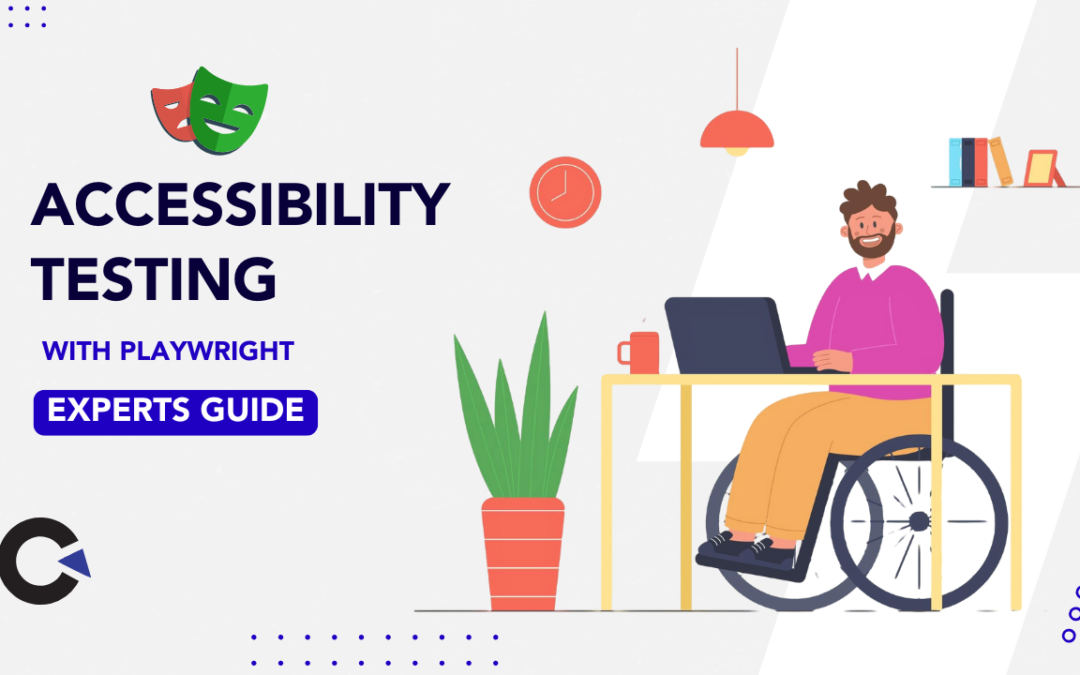
by Guest Admin | Jan 11, 2025 | Accessibility Testing, Blog, Latest Post |
In today’s online world, making web content easy for everyone is very important. This includes people with disabilities. It is key to use accessibility testing tools, manual accessibility assessments, and professional Accessibility Testing services during development. A good way to do this is by using an open-source dev tool like Accessibility Testing with Playwright. These tests check if web content is easy to use for all. They find accessibility issues and help fix them. Doing this work makes for a better user experience for everyone.
Key Highlights
- This guide helps you learn accessibility testing with Playwright.
- You will write your first accessibility test and find better ways to test.
- Discover how to automate keyboard accessibility tests for all users.
- The guide answers common questions about accessibility testing.
- The blog covers everything, from setup to fitting tests for specific accessibility standards.
Understanding the Basics of Playwright for Accessibility Testing
Playwright Test is a great tool for testing web apps completely. It has many features that support accessibility testing. This makes it a good choice for both developers and testers. When you add accessibility checks to your Playwright tests, you can spot problems early.
If we overlook these types of accessibility issues, it can lead to problems for people with disabilities. This might make it hard for them to see and use your web application. Playwright provides a helpful API that supports developers and testers in checking various aspects of accessibility.
What Makes Playwright Ideal for Accessibility Testing?
Playwright is a great tool. It can mimic how people use a web page. This is really helpful for accessibility testing. It shows how users feel when they work with a web application, especially those using assistive technologies. By simulating these interactions, Playwright can find problems that might be missed by just doing a regular check.
Playwright helps you with automated testing. It makes it simple to run accessibility checks quickly and consistently. This step is important to make sure your web application is accessible to everyone.
Using Playwright for accessibility testing helps ensure that everyone can enjoy the web. This approach helps you reach more people and create apps that everyone can use.
Key Features of Playwright for Comprehensive Testing
Playwright is a helpful tool for developers and testers. It helps make web apps easier to access. The tool offers great support for accessibility testing. This support makes testing simple and effective. A major benefit of using Playwright is that it can find and show different types of accessibility rules. This feature makes it a fantastic choice for meeting web accessibility standards.
With Playwright, developers and testers can make test cases that give detailed information about their web apps. This helps them write focused tests in the Playwright framework, enhancing their test execution process. These tests target different aspects of accessibility.
By adding accessibility checks at the start, developers can find and fix possible problems while they create their code.
Crafting Your First Accessibility Test with Playwright
Let’s learn how to make your first accessibility test using Playwright with TypeScript and JavaScript. This easy guide will teach you the basics. It will also help you make web apps that everyone can use. We will begin by setting up the Playwright environment for accessibility testing. This means you need to install some important packages and dependencies.
Next, we will talk about how to write simple accessibility tests using Playwright’s easy API and assertions, incorporating a new fixture for improved functionality. We will also explain how to make separate test cases. This guide will help you feel sure about adding accessibility testing to your development workflow.
Understanding Common Accessibility Issues
Accessibility issues can cover many different problems. They include several types but are not limited to:
- Missing ARIA roles/labels: This is important for screen readers.
- Contrasting colors: Make sure the text is easy to read against the background.
- Keyboard accessibility: Verify that you can use all interactive parts with the keyboard.
- Alt text for images: Images should have alt text for those using screen readers.
- Focusable elements: Ensure that buttons, inputs, and links can be focused on.
Setting Up Your Playwright Environment
To start, make sure you have Node.js and a package manager like npm or yarn on your computer. Then, you can install Playwright using the package manager you chose. Just run the right command in your terminal to add Playwright to your project. This will give you the libraries and tools you need to run your Playwright tests.
Next, you should install an accessibility testing engine. A great choice is the axe-core accessibility engine, which you can use withTags to check your web pages for problems and gives you reports on the scan results. You can set it up using a configuration file or directly in your test code. For more help, look at the section of the axe API documentation.
After you finish these steps, your Playwright environment is ready for accessibility testing. You can now begin writing your test code. This will help make sure your web application is accessible.
1. Set up Playwright for Testing
- First, you must install Playwright.
- Then, you need to set up a test environment.
- You can install Playwright to help with some browsers:
npm install playwright-chromium # For Chromium-based testing
npm install playwright-firefox # For Firefox testing
npm install playwright-webkit # For Safari testing
2. Integrate Axe-Core with Playwright
One popular way to test accessibility is using axe-core and the AxeBuilder class. It is a well-known tool for checking accessibility. You can also connect it with Playwright. This allows you to test web pages easily.
To use axe-core in Playwright:
Install axe-playwright:
npm install axe-playwright
Use it in your test code:
const { test, expect } = require('@playwright/test');
const { injectAxe, checkA11y } = require('axe-playwright');
test('should have no accessibility violations', async ({ page }) => {
await page.goto('https://example.com');
// Inject axe-core library
await injectAxe(page);
// Run accessibility tests
const violations = await checkA11y(page);
// Assert that no violations are found
expect(violations.violations).toEqual([]);
});
injectAxe(page): This adds the axe tool for accessibility to the page.
checkA11y(page): This performs accessibility tests on the page.
3. Test for Specific Accessibility Violations
You can use the checkA11y function to find some accessibility issues. You just need to give it an options object. This lets you pick which rules to check or you can skip some rules.
test('should have no a11y violations excluding some rules', async ({ page }) => {
await page.goto('https://example.com');
await injectAxe(page);
const violations = await checkA11y(page, {
runOnly: {
type: 'rules',
values: ['color-contrast', 'image-alt'], // Only check color contrast and image alt
},
});
expect(violations.violations).toEqual([]);
});
4. Running Accessibility Tests on Multiple Pages
You can run accessibility tests on many pages in your app. You can do this by visiting different routes or by using various test cases.
test('should have no accessibility violations across pages', async ({ page }) => {
await page.goto('https://example.com/page1');
await injectAxe(page);
let violations = await checkA11y(page);
expect(violations.violations).toEqual([]);
await page.goto('https://example.com/page2');
await injectAxe(page);
violations = await checkA11y(page);
expect(violations.violations).toEqual([]);
});
5. CI Integration
To simplify accessibility testing, you can link Playwright tests to your continuous integration (CI) pipeline. This can be done using tools such as GitHub Actions, Jenkins, or GitLab CI.
Example GitHub Actions setup:
name: Playwright Accessibility Test
on: [push]
jobs:
test:
runs-on: ubuntu-latest
steps:
- name: Check out repository
uses: actions/checkout@v2
- name: Install dependencies
run: npm install
- name: Run accessibility tests
run: npm test
6. Handling Accessibility Violation Reports
Playwright with axe-core provides violation reports in JSON format. These reports show violations of a specific rule. By reading these reports, you can see when tests fail because of these violations and allow for a more granular set of individual rules for testing. You can also turn off individual rules for testing. Plus, you can set it up to show results in a more readable format.
test('should not have any violations', async ({ page }) => {
await page.goto('https://example.com');
await injectAxe(page);
const { violations } = await checkA11y(page);
if (violations.length > 0) {
console.log(violations);
expect(violations.length).toBe(0); // Fail the test if there are violations
}
});
7. Customizing Axe Rules
You can change axe’s rules to match what you need. For example, you can turn off some checks or change the limits.
const violations = await checkA11y(page, {
rules: {
'color-contrast': { enabled: false }, // Disable color contrast check
},
});
Advanced Techniques in Playwright Accessibility Testing
As you learn about basic accessibility testing in Playwright, you can try some more advanced methods. One way is to practice keyboard navigation. This practice makes sure that everyone can use your web application, even if they can’t use a mouse.
It is key to customize your accessibility tests to examine certain issues with inclusivity in mind. You should follow guidelines like WCAG (Web Content Accessibility Guidelines). These clear methods aid in enhancing your accessibility testing. This approach lets you concentrate on what your web application requires and what your audience wants.
Automating Keyboard Accessibility Tests
Imagine a person using your web application with just a keyboard. Can they move around different parts easily? Can they access all the functions? Thinking about these questions matters a lot. Doing this will make your app better for people with motor impairments and those who like using a keyboard for navigation. A good way to do this is by using Playwright to help with accessibility tests.
Playwright helps you automatically copy keyboard actions and interactions. This lets you create tests that show how a person would use your website using only a keyboard. By doing this, you can find and fix accessibility issues related to keyboard use.
These issues can come from parts that are hard to reach with the keyboard. They might also include focus indicators that are difficult to see or functions that need a mouse. Some elements could have poor color contrast. Fixing these problems will make your app better for all users.
Customizing Tests for Specific Accessibility Standards
The Web Content Accessibility Guidelines (WCAG) provide helpful tips to make web content easy for everyone to use. They cover a wide variety of accessibility rules related to accessibility. These guidelines are known worldwide and set a standard for web accessibility. If you use Playwright to test for accessibility, you can focus on certain criteria from the WCAG. This helps you make sure your web application meets high accessibility standards.
Playwright helps you set up your accessibility tests. You can pay attention to the specific success criteria that matter most to you. For instance, you may want to check the color contrast in your CSS styles. You might also want to make sure that images include alternative text. Furthermore, you can confirm that keyboard navigation works well.
This clear approach helps you tackle specific accessibility issues. It also makes your app simpler to use for people with various disabilities.
Conclusion
Accessibility testing is important for making sure everyone can use digital experiences. Playwright is a great option for this testing. It has smart features that let you do keyboard testing and change settings for better tests. Start accessibility testing early in the development process. This way, you can catch and fix any accessibility problems before they get bigger. Playwright is a powerful tool for UI testing and has several benefits over Selenium. Use Playwright for thorough accessibility testing that meets industry standards. This helps you create digital products that everyone can access.
Frequently Asked Questions
-
How Is Accessibility Testing Integrated into the Development Process?
Adding accessibility tests early in development is very important. It helps you find problems as you write code. You should check the test results often. Fixing any accessibility issues found during manual testing is key for improving user experience.
-
Which tool is best for accessibility testing?
The axe accessibility testing engine is a strong tool for checking how accessible HTML applications are. It allows you to automate tests efficiently. It works great with the Playwright test automation framework. This will give you clear and trustworthy test results for your web applications.
-
Is Playwright good for UI testing?
Yes, Playwright is great for UI testing. With Playwright test, developers and testers can make strong test cases. These test cases show how users interact with the user interfaces of web apps through automated testing.
-
Is Playwright faster than Selenium?
Playwright test is usually faster than Selenium for automated testing. Its design allows it to run tests quickly. This helps you receive test results sooner. Because of this, Playwright is often the better option in many situations.

by Charlotte Johnson | Jan 8, 2025 | Automation Testing, Blog, Latest Post |
In software testing, especially when it comes to Automation Testing, browser automation is very important. Many developers and testers enjoy using tools like Selenium and Playwright. This blog post will focus on the Selenium to Playwright Migration Guide, highlighting the best practices for making the switch. It will explain why you may want to migrate, the steps to do it, and the key differences to keep in mind.
Key Highlights
- Playwright works better and faster than Selenium. This is mainly because it uses browser contexts and has a more native way to automate tasks.
- Switching from Selenium to Playwright can improve how efficiently you test. It has features like built-in waits, better support for modern web technology, and simpler test scripts.
- You can see Playwright is better than Selenium, especially in handling networks. It can authenticate proxies using headers, something Selenium does not offer.
- You can’t directly convert from Selenium to Playwright. The switch needs a manual process. You must understand how the two frameworks are different, map out the commands, and learn the Playwright’s interaction methods.
- Since Playwright is newer, teams used to Selenium might need to learn it first. It’s important to evaluate your project needs and resources before deciding to make the switch.
Understanding Selenium and Playwright
Before we discuss why and how migration occurs, it’s important to understand what each framework means. Here’s a simple comparison:
What is Selenium?
Selenium is a well-known tool for software testing. It has been a key player in this area for several years. This open-source framework allows you to write test cases in several programming languages, such as Java, Ruby, Perl, Python, and C#.
One of the best things about it is that it supports many browsers. It works with Chrome, Firefox, Safari, Internet Explorer, and Edge. This makes Selenium very good for testing on different platforms.
Developers like Selenium because it works directly with web browsers. It can mimic a user by taking actions and checking how web pages react.
What is Playwright?
Playwright is a new tool for browser automation. It has become popular quickly because it has modern features and strong performance. Made by Microsoft, this framework is based on NodeJS. It can handle complex web applications easily with just one codebase. People enjoy using Playwright because it has a simple API. It works with several programming languages such as JavaScript, Python, Java, and .NET C#. It also works well with popular testing tools and CI/CD systems. Plus, it supports both headless and visible browser testing.
Why Migrate from Selenium to Playwright?
Playwright, created by Microsoft, has many benefits compared to Selenium. This is why it is a popular option for web automation today.
- Faster Execution: Playwright runs in one process. This helps with better synchronization, making test execution quicker.
- Support for Multiple Browsers: Playwright works with Chromium, Firefox, and WebKit right away.
- Built-In Features: It comes with advanced features like tracing, auto-waiting, network interception, and headless mode.
- Ease of Setup: Setting up the Playwright is simple. Its setup makes testing easier.
- Modern APIs: Playwright has cleaner and more intuitive APIs for handling modern web elements. This includes shadow DOMs and iframes.
Key Differences Between Selenium and Playwright
| S.No |
Feature |
Selenium |
Playwright |
| 1 |
Language Support |
Java, Python, JavaScript, C#, Ruby |
JavaScript/TypeScript, Python, C#, Java |
| 2 |
Browser Support |
Multi-browser (needs WebDriver for each) |
Multi-browser with built-in support, including a versatile app option |
| 3 |
Execution Speed |
Moderate (uses WebDriver protocol |
Faster (direct browser control) |
| 4 |
Auto-Waiting |
Limited |
Built-in, waits for elements automatically |
| 5 |
Shadow DOM Support |
Requires additional configuration |
Built-in support |
| 6 |
Built-In Test Runner |
None |
Built-in test runner |
Ease of Use and Learning Curve
Playwright gives users a great experience, especially for developers who are good at modern JavaScript. Its simple and clear API means you will write less extra code than with Selenium test scripts. However, since the API is different, if you know Selenium, you will have to learn some new things about user interactions. You will need to get familiar with Playwright’s syntax and its asynchronous style, which needs understanding of JavaScript’s async/await pattern. Even though there is a learning curve at first, Playwright helps you create test scripts that are cleaner and easier to maintain. This will make it easier to keep your tests updated over time.
Preparing for Migration: What You Need to Know
Before you switch from Selenium to Playwright, here are a few important things to keep in mind:
Prerequisites and System Requirements
Before you can use Playwright, you must set it up the right way:
- Node.js: Playwright runs on Node.js, so you need to have it on your computer. You can read the simple installation steps on Playwright’s website for different operating systems.
- Code Editor: You can choose any text editor you like. But, using an IDE like Visual Studio Code can make your work easier. It has useful tools like IntelliSense, which helps with coding and debugging.
- Browser: Playwright works with Chromium, Firefox, and WebKit. When you set it up, it will install the required browser files. You can also run tests in headless mode. This means you can run tests without needing a visible browser window.
Assessing Your Current Selenium Setup
Before you switch, take some time to look at your current Selenium test suite and test data. Think about what work is needed for the change. Refer to a Selenium to Playwright Migration Guide to help assess your testing environment. Check the languages you are using, how hard your tests are, and if you have any links to other tools or workflows. If you are using a specific Selenium framework like WebDriverIO or Protractor, you may need to make significant changes to work with Playwright’s API.
Steps for Selenium to Playwright Migration
1. Install Playwright
- Install Playwright in your project folder.
- Use the package manager you like best.
For JavaScript/TypeScript:
For Python:
pip install playwright
python -m playwright install
For Java:
mvn dependency:playwright
For C#:
dotnet add package Microsoft.Playwright
2. Initialize a New Playwright Project
Set up your Playwright testing area. This is for JavaScript and TypeScript.
npx playwright@latest init
This sets up a simple structure with settings files and sample tests.
3. Rewrite Selenium Tests in Playwright
Selenium Code Example:
from selenium import webdriver
# Open browser
driver = webdriver.Chrome()
driver.get("https://example.com")
# Interact with elements
search_box = driver.find_element("name", "q")
search_box.send_keys("Selenium")
search_box.submit()
# Validate
assert "Selenium" in driver.title
# Close browser
driver.quit()
Equivalent Playwright Code:
from playwright.sync_api import sync_playwright
with sync_playwright() as p:
# Launch browser
browser = p.chromium.launch(headless=False)
page = browser.new_page()
# Navigate to URL
page.goto("https://example.com")
# Interact with elements
page.fill("input[name='q']", "Playwright")
page.press("input[name='q']", "Enter")
# Validate
assert "Playwright" in page.title()
# Close browser
browser.close()
4. Map Selenium APIs to Playwright APIs
Here’s how often used Selenium methods compare to Playwright APIs:
| Action |
Selenium API |
Playwright API |
| Launch Browser |
webdriver.Chrome() |
chromium.launch() |
| Open URL |
driver.get(url) |
page.goto(url) |
| Find Element |
find_element(By.ID, “id”) |
page.locator(“#id”) |
| Click Element |
element.click() |
locator.click() |
| Type Text |
element.send_keys(“text”) |
locator.fill(“text”) |
| Wait for Element |
WebDriverWait(driver, timeout).until() |
locator.wait_for() |
| Take Screenshot |
driver.save_screenshot(“file.png”) |
page.screenshot(path=”file.png”) |
| Close Browser |
driver.quit() |
browser.close() |
5. Replace Explicit Waits with Playwright’s Auto-Waiting
Selenium often needs clear waits to manage changing content.
from selenium.webdriver.common.by import By
from selenium.webdriver.support.ui import WebDriverWait
from selenium.webdriver.support import expected_conditions as EC
element = WebDriverWait(driver, 10).until(
EC.presence_of_element_located((By.ID, "example")))
Playwright automatically waits for elements to show up.
page.locator("#example").click()
6. Use Playwright’s Test Runner for Enhanced Testing
Playwright has a test runner that is built-in. This runner comes with fixtures, tracing, and the ability to run tests in parallel. Here is an example of a Playwright test using the runner:
const { test, expect } = require('@playwright/test');
test('Example test', async ({ page }) => {
await page.goto('https://example.com');
await page.fill('input[name="q"]', 'Playwright');
await page.press('input[name="q"]', 'Enter');
await expect(page).toHaveTitle(/Playwright/);
});
Run the test with:
7. Leverage Advanced Playwright Features
- Tracing: Debug test failures by capturing traces:
const { test } = require('@playwright/test');
test('Trace Example', async ({ page }) => {
await page.tracing.start({ screenshots: true, snapshots: true });
await page.goto('https://example.com');
await page.tracing.stop({ path: 'trace.zip' });
});
- Network Interception: Mock API responses easily:
await page.route('https://api.example.com/data', route =>
route.fulfill({ status: 200, body: JSON.stringify({ key: 'value' }) })
);
Conclusion
In conclusion, moving from Selenium to Playwright can give you better performance and speed. It is also easier to use. By referring to a comprehensive Selenium to Playwright Migration Guide, you can learn about the differences between these tools and prepare for the change. This will make your testing processes smoother. Use the step-by-step guide to help you migrate easily. Playwright has advanced capabilities and is a powerful tool for developers. Stay on top of automated testing by switching to Playwright. This will help you enjoy its benefits for reliable testing. If you are thinking about making the move to Playwright, follow our detailed Selenium to Playwright Migration Guide to make your transition easy and successful.
Frequently Asked Questions
-
Can Playwright Fully Replace Selenium in All Aspects?
While Playwright offers many benefits, it cannot replace Selenium in every case. If your project uses Internet Explorer, Playwright does not support it by default. You may also need Selenium to test on mobile devices where Playwright has some limits. Selenium has a well-known system and is popular in the software industry. This makes it a better choice for some projects. It is very important to look closely at what your project needs. Consider things like test execution speed, support for different browsers, and how well it works with the tools you already have before deciding to switch.
-
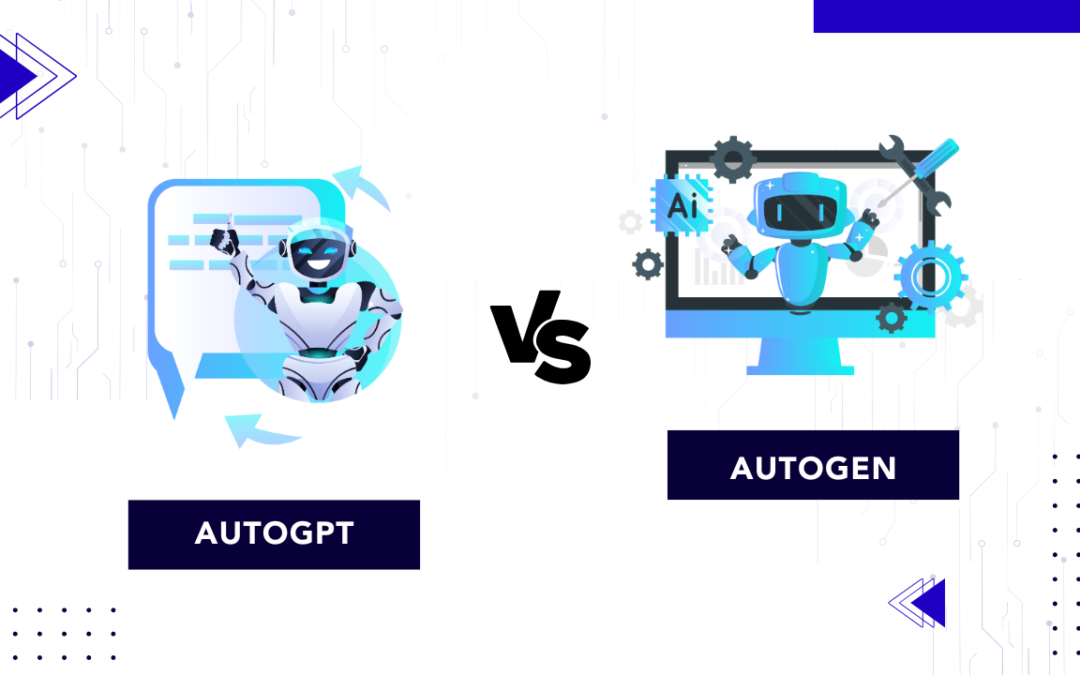
by Arthur Williams | Jan 7, 2025 | Artificial Intelligence, Blog, Latest Post |
The world of artificial intelligence, or AI, is changing quickly. New tools like AutoGPT vs AutoGen are at the front of this change. These smart AI agents are not just tools. They show us what the future of AI could be like. They can manage tasks on their own and create complex code. This comparison will take a closer look at AutoGPT vs AutoGen and other AI services. It will show what they can do, how they are different, and how they might impact various areas.
Key Highlights
- AutoGPT and AutoGen are new AI tools changing how we use technology.
- AutoGPT is great at performing tasks by itself, while AutoGen focuses on producing code efficiently.
- Both tools use Large Language Models, but they serve different purposes.
- Knowing their special features and differences can help you pick the right tool for your needs.
- To use these tools well, you need some tech skills, but they open up many new automation options.
Understanding AutoGPT and AutoGen
AutoGPT vs AutoGen are top tools in generative AI. They use large language models that are trained on a lot of data. These tools can read and write text that seems human-like. This ability makes them helpful in many areas.
What makes them different is their work style. AutoGPT is excellent at finishing complex tasks on its own. It needs very little help from people. AutoGen, on the other hand, is best for creating high-quality code quickly and effectively.
Both tools are open source. This allows developers from all over the world to join forces and improve them. This openness is great for experienced developers who want to make their work easier. It is also perfect for beginners who are just starting with AI-powered code generation.
What is AutoGPT?
AutoGPT is a framework that anyone can use to build AI agents that can work on their own. It is made to complete tasks with little help from people. You can set big goals, and AutoGPT will handle the planning and doing of those tasks. It will keep going until it reaches what you wanted. This shows how it can be a step towards artificial general intelligence.
Key Features of AutoGPT
- Independence: After setting a goal, AutoGPT works alone. It divides the goal into smaller tasks and completes them step by step.
- Focused on Tasks: AutoGPT is very good at automating workflows that have clear goals.
- Easy to Integrate: It can use plugins and connect with external APIs. This lets it work with databases, file systems, or other tools.
- Ongoing Improvement: AutoGPT checks its progress regularly and makes changes to get better results.
Use Cases for AutoGPT
- Research Automation: Collecting, summarizing, and analyzing data by itself.
- Content Generation: Writing blogs, making reports, or drafting emails.
- Business Workflows: Automating boring tasks like scheduling or entering data.
AutoGPT is great for situations where one independent agent can reach a set goal easily.
What is AutoGen?
AutoGen is a system that helps create multi-agent setups. In these setups, several AI agents work together. They talk, share ideas, and solve tricky tasks through automated chat. AutoGen emphasizes teamwork. Each agent has a special role. They exchange information to reach their goals together.
Key Features of AutoGen
- Multi-Agent Collaboration: AutoGen lets several AI agents team up. They can work together, mimicking teamwork and solving problems as a group.
- Role Specialization: Each agent can have a different job, like planning, researching, or analyzing data. This setup is great for handling complex tasks.
- Dynamic Communication: The agents talk to each other and share information. This helps them adapt to new issues and improve their plans.
- Human-in-the-Loop: AutoGen includes the option for human oversight or participation. This makes it great for teamwork.
Use Cases for AutoGen
- Team Problem-Solving: Great for brainstorming, planning projects, or working on school research.
- Flexible Workflows: Best for situations needing different views or skills, like creating plans or studying big data.
- Custom AI Solutions: Creating smart AI systems designed for certain industries or needs, like helping customers or developing products.
AutoGen is a great choice for projects. It can handle many agents that have different roles. These agents can talk to each other and adjust as needed.
The Evolution of AutoGPT and AutoGen
AutoGPT and AutoGen have changed a lot since they began. They are now creating exciting new possibilities. This change comes from improved technology and support from developers all over the world. These tools show how advanced artificial intelligence can be. They are becoming better and more adaptable at handling different tasks.
The work happening now on AutoGPT vs AutoGen shows how great the open-source community can be when they team up. Developers keep making current features better, adding new ones, and improving the tools we use. Because of these efforts, the future of AI looks really bright.
The Development Journey of AutoGPT
The development story of AutoGPT is a fascinating example of how AI can grow and get better. It began as an experiment on Github. A lot has changed since then, thanks to the feedback from people. Users, developers, and AI fans worldwide have helped it advance. They showed what could be improved, suggested new features, and reported bugs.
This teamwork has helped AutoGPT improve technology. It also thinks about what future users need. With each update, AutoGPT learns from people. This learning allows it to reach its full potential. It becomes more accurate, efficient, and can handle complex tasks better.
AutoGPT is an open-source project. It works like a GitHub repository where people share ideas. This makes it easy for anyone to join in and help. As more people contribute, they help improve AI technology. Because of this, AutoGPT has grown from a fun project into a powerful tool that can change many areas of our digital lives.
How AutoGen Has Changed Over Time
AutoGen’s story shows how quickly OpenAI’s tools are improving. It also highlights how more people are using the API key system. The first versions of AutoGen were good, but they had some limitations. They worked well for making small pieces of code and automating tasks in a folder, but they didn’t grasp larger project ideas.
AutoGen is much improved now due to the latest updates in OpenAI’s models. It understands how code works and what a project needs. AutoGen can create complex code blocks, complete functions, and even suggest new ideas for coding problems.
This progress is not only about being more efficient. It also helps developers by giving them tools that spark creativity and fresh ideas in their coding. One key aspect is improved customer support features. As OpenAI continues to get better at natural language processing, we can expect more exciting updates in AutoGPT vs AutoGen’s abilities. This will make AutoGPT vs AutoGen increasingly significant in the world of software development.
Key Differences Between AutoGPT and AutoGen
| Aspect |
AutoGPT |
AutoGen |
| Core Concept |
Single autonomous agent |
Multi-agent collaboration |
| Task Focus |
Goal-oriented, predefined tasks |
Dynamic, multi-faceted problem-solving |
| Interaction Style |
Minimal user input after setup |
Agent-to-agent and human-to-agent inpu |
| Customization |
Limited to plugins and goals |
Highly customizable roles and workflows |
| Best For |
Automating routine workflows |
Collaborative and complex tasks |
| Setup Complexity |
Simple to moderate |
Moderate to complex |
AutoGPT: Unique Features and Advantages
AutoGPT vs AutoGen is special because AutoGPT can do complex tasks by itself. This makes it an important tool for Python applications. Unlike ChatGPT, which always needs you to give it prompts, AutoGPT can plan and complete several steps with very little help. This ability opens up new job opportunities in areas like research, data analysis, and content creation.
For example, you can use AutoGPT to explore social media trends for your business. Simply share your goals and key details. It will look at platforms like Twitter, Instagram, and Reddit. AutoGPT will collect important data, identify new trends, and produce detailed reports. This kind of automation allows you to focus on major decisions while AutoGPT handles the tough tasks.
AutoGPT can learn from its mistakes. It gets better at solving problems by using feedback. This helps it become more efficient and accurate as time goes on. This ability to improve makes AutoGPT a useful tool for complex tasks that require continuous learning.
AutoGen: Distinctive Characteristics and Strengths
AutoGPT vs AutoGen is known as the “next big thing” in AI for code generation. This tool helps developers speed up their work and be more productive. Made by Significant Gravitas, AutoGen does more than just finish code. It understands the project’s context. It can create complete code blocks, complex functions, and even entire app structures.
If you want to create a mobile app with special features, you don’t need to write every line of code yourself. Instead, you can tell AutoGen what you need in simple words. It will use its programming skills to generate most, or even all, of the code for your app. This approach saves a lot of time during development. It allows even those who don’t know much about coding to make their ideas real.
The power of AutoGen is in making development faster. It reduces mistakes and allows developers to focus on key tasks. This aids creativity and expands what can be achieved in software development.
AutoGPT vs AutoGen: Which One Should You Choose?
When to Choose AutoGPT:
- You have clear goals that can be automated without needing to work with others.
- The tasks include repeating actions or processes such as creating content, doing research, or handling regular business tasks.
- You like a simpler setup and want to keep ongoing effort low.
When to Choose AutoGen:
- You are dealing with difficult issues that need different viewpoints or skills.
- Jobs need active teamwork, like sharing ideas, planning projects, or doing research with academics.
- You want to create a team-like setting where several agents play specific roles.
Conclusion: Embracing AI’s Potential with AutoGPT and AutoGen
Both AutoGPT vs AutoGen are new steps forward in AI automation and teamwork. AutoGPT works best for tasks that people do by themselves. On the other hand, AutoGen is great for working in groups and solving problems together.
By knowing their special strengths and use cases, you can use these frameworks to change how you handle tasks, fix problems, and create new things with AI
Frequently Asked Questions
-
How Do I Choose Between AutoGPT and Autogen?
Think about how you will use these tools. AutoGPT is good for big tasks. It can help you with research, using search engines, and even act like a chatbot. Autogen, on the other hand, is best for code generation. It works well for making plugins and fixing specific coding problems.
-
Can AutoGPT and Autogen Be Used Together in Projects?
You can use AutoGPT and Autogen together, even if they are not designed for that. Think of it this way: AutoGPT takes your instructions and then uses Autogen to write code for certain parts of a larger project. For example, AutoGPT could create a browser plugin using Autogen. This plugin might collect data from Instagram for a market research job.

by Anika Chakraborty | Jan 6, 2025 | Artificial Intelligence, Blog, Latest Post |
In the fast-changing world of software development, AI models and AI development services are becoming very important. They help make things easier and improve efficiency, especially in AI for code documentation generation. Creating documentation is key for any software project. However, it can take a lot of time. Often, it gets skipped because of tight deadlines. This is where AI development services for code documentation come in. They offer new ways to automatically create documentation. These services make code easier to read and help boost developer productivity..
Key Highlights
- AI is changing code documentation. It makes tasks easier and clearer.
- AI tools can create documentation, improve code comments, and simplify API documentation.
- Better documentation helps people work together, speeds up training, and raises code quality.
- AI reduces manual work and makes documentation more accurate.
- Exploring AI-powered documentation tools can really help developers and development teams.
What is Code Documentation?
Code documentation refers to written or visual information that explains the functionality, structure, and behavior of code in a software project. It helps developers and others working with the codebase understand how the code works, what each component does, and how to use or modify it. Code documentation is an essential part of software development, as it ensures the code is maintainable, readable, and understandable by current and future developers.
There are two main types of code documentation:
1. Inline Documentation (Comments):
- Inline comments are brief explanations embedded directly in the source code. They help clarify the purpose of specific lines or sections of code.
- Docstrings (in languages like Python, Java, etc.) are multi-line comments used to describe the purpose and usage of functions, classes, or modules.
2. External Documentation:
- External documentation includes guides, manuals, and other documents that explain how to use, set up, and maintain the software system. It provides high-level information, often aimed at users or developers unfamiliar with the project.
- Examples include README files, API documentation, and user manuals.
The Challenges of Traditional Code Documentation
- Time-Consuming: Writing good documentation can take a long time. This is especially true when the codebase is large and changes a lot.
- Inconsistent Formatting: It is tough to keep the document format even. This is more of a challenge in big teams or when working on several projects.
- Keeping It Up-to-Date: Code changes all the time, but sometimes the documentation does not keep up. Developers may forget to update it after they change the code.
- Lack of Clarity: The person writing the code might not explain it well. This can result in documentation that is unclear or confusing.
Enhancing Code Documentation Through AI
Traditionally, writing code documentation required people to describe everything themselves. This practice could cause mistakes and make it harder for developers. Now, with AI, creating code documentation is getting easier and more efficient.
AI tools can read code and see what it does. They can create clear and accurate documentation. This saves developers time and effort. It also helps make the documentation consistent and easy to read.
1. Automated Generation of Code Documentation
One great benefit of AI in code documentation is that it simplifies the process. AI tools can look at code written in many programming languages. They can find important parts such as functions, classes, and variables.
An AI tool can create clear documentation. It shows how different parts of the code link and fit together. This documentation tells about the purpose and function of each code part. Automating this process saves developers time. They usually spend a lot of time writing this by hand. With the time saved, they can focus on more important tasks.
AI tools for documentation can easily link to popular development environments and version control systems. This helps keep the documentation up to date with the newest changes in the code.
2. AI-Enhanced Code Commenting for Better Understanding
Automated documentation generation is very helpful. However, clear and simple code comments are really important. They help developers understand how different parts of the code function. AI models are improving and can assist better in writing code comments.
These AI tools can check code files. They look for places where comments are missing or unclear. They also suggest helpful comments that explain what the code does and why it is written that way. This helps keep a consistent style of commenting in the codebase. With these AI tools, developers can follow best practices for code documentation. This makes the code easier for everyone on the team to read and manage.
Good code comments are helpful for more than just the developers who write the code. They also aid new team members in learning and getting used to the work.
3. Streamlining API Documentation with Artificial Intelligence
APIs, which stand for Application Programming Interfaces, play a big role in software development today. Good documentation about APIs helps developers understand how to use them effectively. Now, AI tools make creating API documentation easier. These tools can make and update documentation that is accurate and up to date for APIs.
These AI tools can read code and help you create API documentation. They can make this documentation in several formats, including Markdown, HTML, and PDF. Using API definition languages like Swagger and OpenAPI, these AI tools provide clear information about endpoints, request parameters, response structures, and error codes.
| Feature |
Description |
| Endpoint Documentation |
Detailed descriptions of each API endpoint, including HTTP methods, URLs, and authentication requirements |
| Request Parameters |
Comprehensive documentation of all required and optional parameters, data types, and validation rules |
| Response Structures |
Clearly defined response schemas, including data types, formats, and examples of successful responses |
4. Leveraging AI for Error-Free Code Samples
Code samples are important in documentation. They help people understand how to use functions, classes, or APIs. However, keeping these code samples clear and accurate in different languages, like JavaScript, Java, and Python, can be tough. AI models can help ensure that the code samples in documentation are correct and trustworthy.
Smart AI models can learn from many code examples. They understand the rules, meanings, and best practices of different programming languages. With this knowledge, these models can spot and point out possible errors in code. This includes typing mistakes, wrong function names, or missing parts. They can also suggest ways to fix problems or improve the code. This helps keep the code fresh and in line with the latest rules of the programming languages.
AI models can create new code samples based on your needs. When developers explain what they want, the AI model can generate accurate and effective code samples. This saves time and lowers the chance of errors.
5. Improving Code Readability with AI-Driven Formatting Tools
Code readability is very important. It makes code easy to maintain and work on in software development. If the format is not consistent, understanding the code becomes difficult. This can result in mistakes. Standard formatting tools can help a lot, but AI-driven tools are even more helpful.
These AI tools can look at the whole codebase. They show where you can make improvements in formatting. They do more than just check simple rules for spaces and indentation. They suggest changes that help organize and structure the code better. For example, they may find functions or classes that are too long. They will recommend breaking them down into smaller parts that are easier to manage. They can also find repeated code and give you ways to rewrite it. This makes the code easier to read. It also lowers the chance of mistakes and cuts down on repetition.
AI-driven formatting tools usually work well with popular IDEs and code editors. They give instant feedback and tips while developers write code. This fast feedback helps developers keep coding standards consistent. As a result, the code is cleaner and easier for the whole team to understand.
Popular AI Tools for Code Documentation
Here are some AI tools that can help developers write better code documentation:
- GitHub Copilot is an AI tool from OpenAI’s Codex. It helps you write code by suggesting comments and documents. It works inside your Integrated Development Environment (IDE) and understands your code. This keeps your documentation fresh with your code updates.
- Tabnine is an AI helper that boosts your coding speed and quality. It provides code suggestions and helps with writing useful documentation based on what you code. It works with several IDEs and many programming languages.
- Kite uses AI to complete code and can automatically create documentation. It’s especially good for Python developers. Kite works with popular IDEs like VSCode and Atom. It helps document details about functions, such as signatures, parameters, and docstrings, using AI.
- Natural Language Processing AI tools that use NLP, like GPT-3 from OpenAI, can make documentation from code. These tools read the source code and create clear, easy-to-understand explanations. This method saves a lot of time compared to writing documentation by hand.
The Impact of AI on Developer Productivity and Code Quality
Using AI in code documentation makes it simpler for developers to do their work. It helps to make the quality of the code better. AI tools can take care of the boring documentation tasks. This frees up time for developers to solve problems, come up with new ideas, and write improved code.
AI creates clear and accurate documentation. This makes it easier to share knowledge. New developers can learn quickly this way. It also helps reduce mistakes that come from confusion. AI improves the development process and encourages teamwork. It plays a big role in making software projects better. Everyone can keep up more easily.
Enhancing Developer Collaboration with AI-Assisted Documentation
In today’s software development, being part of a team is key for success. Good communication is very important. Everyone should also understand the codebase clearly. AI-assisted documentation can make teamwork better. It gives everyone in the team the same and updated information.
When team members can easily access clear and accurate documentation, they work together more effectively. This helps them solve problems and keep everyone informed about the project’s progress and details. AI-driven documentation tools have helpful features. These include real-time editing, version control, and comment threads. These tools allow several developers to edit the same document at once and track changes easily.
AI can improve communication among team members in software development. It makes creating documentation simpler for those who don’t have technical skills, like product managers, designers, or business analysts. This helps everyone in the team to talk and work together more easily.
Reducing Manual Efforts and Increasing Accuracy in Documentation
One big benefit of using AI in code documentation is it lessens how much people must write. AI models can take care of boring and repetitive tasks. They can create basic descriptions, locate important details in code, and keep a steady format. This helps developers save time on writing and updating documents. They can focus more on creative and strategic work in software development.
AI is great at managing complex patterns and large amounts of data. This ability helps it create accurate documentation. Manual documentation can often contain mistakes. On the other hand, AI can read code accurately. It can find connections between various parts of the code. After that, it generates documentation to show how the code operates. Changing from manual to automated documentation makes the documents more precise and trustworthy.
Developers can trust that the documentation they read is current. It aligns with the codebase. This confidence helps to lower confusion, mistakes, and delays in development.
Conclusion
Using AI for code documentation changes how developers work. It helps them be more productive. It also improves the quality of their code. AI can automatically make documentation. It can support commenting on code and organize API documents. It gives error-free code samples too. Additionally, it makes the code easier to read. This leads to better coding projects that are both efficient and accurate. By cutting down on manual tasks, AI improves teamwork. It changes the way we handle code documentation. Use AI to make your coding easier. This will enhance the quality of the code in your projects.
Frequently Asked Questions
-
How does AI improve the process of code documentation?
AI models look at source code files in different programming languages to see how they work. This helps create accurate documentation automatically. So, developers can save a lot of time and effort during software development.
-
Can AI tools generate documentation for any programming language?
Some AI tools use popular programming languages. However, many can also create documentation for several languages. This includes TypeScript and others. This feature makes them useful in different development environments.
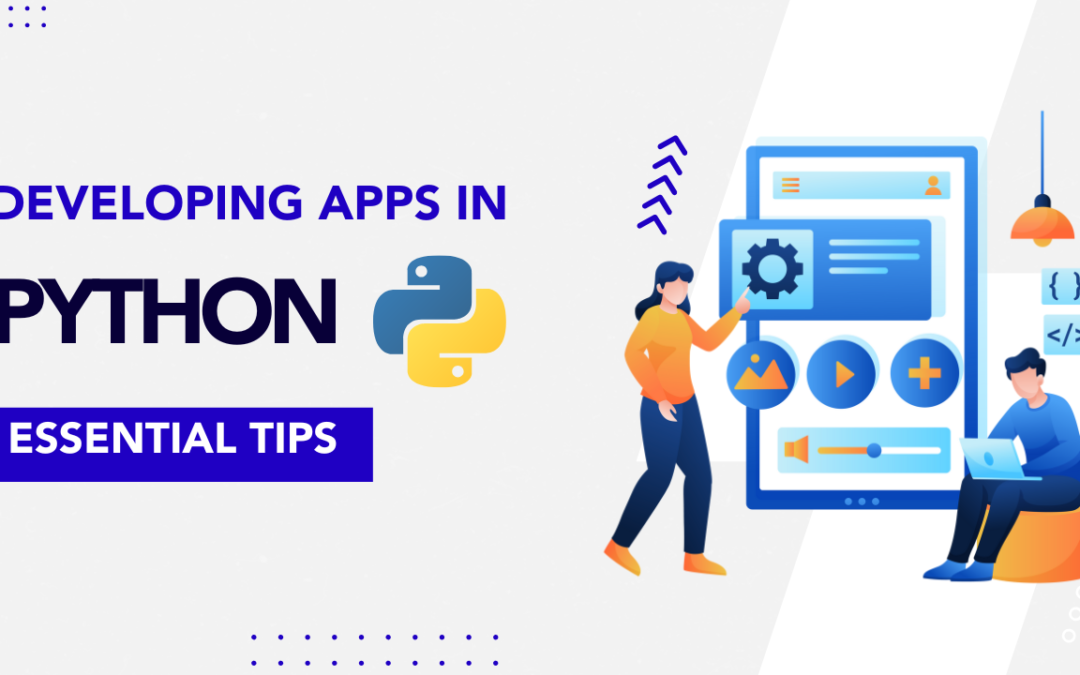
by Arthur Williams | Jan 4, 2025 | Software Development, Blog, Latest Post |
In software development, Python is the most popular programming language today. It is easy to read and very flexible. Python also has many libraries that help developers get their work done. This makes Python a great choice for a variety of projects. You can use it to create many different types of apps, from web apps to mobile apps. Python plays an important role in the digital world. This guide will help you learn how to Develop Apps in Python. It has helpful tips and information for both new and experienced developers.
Key Highlights
- Python is a great choice for making apps because it is flexible and has many libraries.
- Frameworks like Kivy and BeeWare help Python support mobile app development. This means you can make apps that work on different platforms.
- It’s important to know what Python can do well and where it may fall short. Picking the right framework is also vital in the development process.
- To create successful apps, you should master Python libraries, create a user-friendly interface, and focus on strong security measures.
- Python plays a key role in popular apps like Instagram, Spotify, and Pinterest. This shows it can handle tough tasks and serve many users.
Essential Tips for Developing Apps in Python
Building applications in Python successfully needs several skills and good choices. It goes beyond just writing code. You must choose the right tools. You also need to know what Python can actually achieve.
We begin by picking a framework that meets your project’s needs. After that, we look into Python’s many libraries. Next, we create easy-to-use interfaces and include good security features for your app. All these steps are important to build an application that works well and connects with users.
1. Choosing the Right Framework for Your Project
Navigating Python frameworks is usually the first step in app development. The framework you choose will depend on your project type. Are you building a web app, mobile app, or desktop application? If you are making a web app, Django is a great choice. It is strong and can handle more growth as you need it.
Flask has a simple design and gives developers more options. If you are building a mobile app, Kivy and BeeWare are good choices. Kivy is useful for making stylish apps with multi-touch features. BeeWare is better for creating apps that feel like they belong on different platforms, focusing on a native feel. You should think about your project needs and what each framework does best. This will help you start your app on the right foot.
2. Setting Up a Pythonic Development Environment
Creating a good development environment is like making a workspace for an artist. You need to have the right tools nearby. A well-organized Python development environment makes it easier to write code, fix problems, and work with others. This helps make the software development process smooth and efficient.
Start by picking a good IDE (Integrated Development Environment). Popular options are PyCharm and VS Code. These IDEs help you edit code, fix mistakes, and handle different versions of your code. A virtual environment gives your project a safe space. It prevents issues with different Python libraries and keeps your project running smoothly.
Example:
- First, download and install VS Code. After this, add the Python extension.
- Next, open your project folder. Create a file named app.py.
- Now, set up a virtual environment.
python -m venv venv
source venv/bin/activate # For Windows: venv\Scriptsctivate
pip install flask
3. Mastering Python’s Libraries for App Development
Python is great for making apps. It has a wide range of libraries. These libraries help developers add features to their apps easily. This includes web scraping options. Developers don’t need to start from scratch. For apps that work with data, libraries like Pandas, NumPy, and SciPy are very useful. They help with data analysis and scientific computing tasks.
When we talk about machine learning, TensorFlow and PyTorch are key tools. They help developers add smart algorithms to their projects. For web development, there are libraries like Flask and Django. For game development, Pygame is a popular choice. If you need to work on image processing, Pillow is a good option. Knowing how to use these libraries allows developers to build strong and effective applications.
Example:
Using Pandas for Data:
import pandas as pd
data = {'Name': ['Alice', 'Bob'], 'Age': [25, 30]}
df = pd.DataFrame(data)
print(df)
Creating a Web App with Flask:
from flask import Flask
app = Flask(__name__)
@app.route('/')
def home():
return "Welcome to My Web App!"
if __name__ == '__main__':
app.run(debug=True)
4. Designing a User-Friendly Interface
In the app market, having a design that is easy to use can really impact success or failure. A good design links your code to the users. It should be simple to use and easy to navigate. A complicated or messy interface can turn users away, even if your app works well.
Start by planning how your app will look. Ensure that you can easily see the links between different screens or features. Pay careful attention to your choices of color, text style, and the layout of visual elements. A nice-looking design can make the user experience better. For mobile applications, remember the smaller screens. Focus on making it easy for people to touch and interact with the app.
Example:
Simple Interface with Tkinter:
from tkinter import Tk, Button
root = Tk()
Button(root, text="Click Me!", command=lambda: print("Clicked!")).pack()
root.mainloop()
5. Implementing Robust Security Measures
In a time when data breaches are often in the news, adding strong security features to your app is very important. This protects user data and keeps their trust in your app. It also helps your app stay popular for a longer time. A single security flaw can cause big problems. It can expose sensitive information and damage your app’s reputation.
- First, use strong methods to check who can access user accounts.
- Also, secure sensitive data when it is sent and stored to prevent unauthorized access.
- Make sure to keep your app’s features up-to-date to fix known problems.
Example:
Encrypting Passwords:
from werkzeug.security import generate_password_hash
password = "mypassword"
print(generate_password_hash(password))
Using Environment Variables:
import os
os.environ['SECRET_KEY'] = "mysecretkey"
print(os.environ.get('SECRET_KEY'))
6. Optimizing App Performance with Python
The performance of an app is key to keeping users satisfied. When an app is slow or takes up too much energy, users may feel frustrated and decide to leave. Python is a flexible tool that supports asynchronous programming. However, it requires careful tweaks to ensure your app runs well. This is especially true for heavy mathematical calculations or large datasets.
Start by looking at your Python code to find any slow sections. Improve your loops, use better data structures, and reduce unnecessary tasks. Consider saving data that users check often to reduce database searches.
Example:
Caching Results:
from functools import lru_cache
@lru_cache(maxsize=10)
def square(n):
return n * n
print(square(4))
7. Ensuring Cross-Platform Compatibility
In today’s tech world, it is important to have your app work well on different devices. You want users to feel the same experience, whether they are using your app on a desktop, phone, or tablet. If your app does not work well on these platforms, you could lose many potential users.
Python can be very helpful for you. It has tools like Kivy and BeeWare. These tools make it easy to create open source apps for several systems. This includes Windows, MacOS, Linux, Android, and iOS. You can use the same code for all these platforms. However, keep in mind that you may need to tweak some things for each system to make everything run smoothly. A great example of an app you can build is Bridge Commander.
Example:
Using Kivy for Cross-Platform Apps:
from kivy.app import App
from kivy.uix.button import Button
class MyApp(App):
def build(self):
return Button(text='Hello!')
MyApp().run()
8. Debugging and Testing Your Python App
Debugging and testing are key parts of making software. This also applies to Python apps. These steps are all about finding and fixing mistakes. They help your app run well and provide a good experience for users. If your app has bugs, users might lose trust in it. This can harm your app’s reputation.
Python offers several methods to assist with fixing issues and checking your code. You can use debuggers to go through your code step by step. You can set breakpoints and look at the values of variables while your application is running. You should also create unit tests to ensure that each section of your application functions properly. Furthermore, use integration tests to verify that different sections of your application work well together.
Example:
Debugging in VS Code:
- Add breakpoints in VS Code.
- Press F5.
- Step through your code.
Testing Code:
def add(a, b):
return a + b
assert add(2, 3) == 5
9. Deploying Your Python App Successfully
Deploying your Python app means it is moving from your development environment to the real world. This is when users can start to use your work. A smooth deployment is very important. It allows users to access your app easily without any issues. At this stage, you usually need to pick a good hosting provider, set up servers, and organize any databases or tools you need.
Cloud platforms such as AWS, Google Cloud, and Heroku help you deploy Python apps more easily. They offer environments and solutions that can expand based on your needs. If you are building web applications, choosing the right Python web framework, like Django or Flask, can significantly impact how your app is deployed.
Example:
Deploy to Heroku:
heroku create
git push heroku main
10. Maintaining and Updating Your App
The work of app development doesn’t stop when you launch it. It is a continuous process that needs regular attention. You must make updates and changes to match user needs and market trends. If an app doesn’t change, it might get pushed aside by competitors who keep improving. To keep users interested, it is key to fix problems, improve performance, and introduce new features.
Using a good version control system, such as Git, helps keep track of changes. It also makes teamwork better. Getting feedback from users through reviews, surveys, or analytics is useful. This feedback shows what areas need attention. For software engineers, having a mindset focused on constant improvement is key to making apps that will stand the test of time.
Example:
Use Git for Updates:
git commit -m "Fix bug"
git push origin main
Collect User Feedback:
Use simple surveys or app reviews to understand what users need next.
Understanding Python’s Role in Mobile App Development
Python may not be the top choice for mobile app development, particularly for Android apps. Still, it has made its mark in this space. It doesn’t try to replace native languages like Swift or Kotlin. Instead, Python is a good option, especially for development that works on multiple platforms.
Python helps developers create mobile apps using frameworks like Kivy and BeeWare. They can use one set of code for different systems. This way makes development easier and cheaper. It also keeps things the same across all platforms.
The Significance of Python in the Mobile Ecosystem
Python is starting to be used in mobile app development. This includes games like World of Tanks. This change is because Python has many libraries and frameworks made for this purpose. Its popularity is also noted by the TIOBE index. Even though Python is not usually a language for mobile platforms, tools like Kivy and BeeWare help to solve this issue.
These frameworks are like a bridge. They turn Python code into a format that mobile operating systems, like Android and iOS, can read. Kivy is useful because it is flexible. It helps developers create stunning and interactive mobile applications. BeeWare wants to give a native look and feel across different platforms. This makes apps feel more like native user interfaces. It does this by using UI elements that fit each specific platform.
Case Studies: Successful Python Mobile Apps
The effect of Python on mobile app development is shown well through real examples, especially in data science. These cases show how Python, when paired with other technologies, can create apps that draw in millions of active users and reach great financial success.
Take Instagram, for example. This huge photo and video-sharing platform has over a billion active users. It uses Python for its backend system and several Python app examples. Likewise, Spotify, the popular music streaming service, depends a lot on Python for data analysis and recommendation systems. This helps create personalized listening experiences for its large user base. These examples highlight how well Python can manage the needs of big applications in the mobile app world.
| App |
Category |
Description |
| Instagram |
Social Media |
Leverages Python for its backend infrastructure and scalability |
| Spotify |
Music Streaming |
Uses Python for data analysis and recommendation algorithms |
| Pinterest |
Content Sharing |
Relies on Python and Django for handling substantial content loadss |
Overcoming Challenges in Python App Development
Python is a good choice for making apps. However, you should also be aware of some challenges. A major issue is that Python relies on external frameworks, like Kivy and BeeWare. These frameworks allow Python to meet the unique requirements of mobile devices.
They can create problems too. You might face issues with performance. You may also have trouble accessing features that only work on some platforms. Plus, you need to ensure that your app runs on various versions of operating systems. To tackle these problems, you might have to ask for help from the community. Be prepared to learn about the specifics of each platform as well.
Handling Platform-Specific Limitations
While tools like Kivy and BeeWare make it easier to create mobile apps using Python, there are still some limits. Python does not have the same access to phone features as native languages like Swift for iOS or Kotlin for Android. This is especially true when you want to deploy on Google Play. Because of this, Python apps might not use all the features that native apps can.
These limits may happen when you try to use special hardware features. For example, this includes a device’s camera or Bluetooth. To fix these issues, you might need to write specific code for each platform. This code helps link your Python app to the native features you want to use.
Achieving Seamless Integration with APIs
In today’s app world, it’s common for apps to connect with other services. Many apps have features like social media sharing, cloud storage, and payment gateways. To make this work well, they need to use APIs effectively. Still, the integration process can be tricky. Problems can occur from differences in data formats, authentication methods, or API versions.
To handle these problems, read the API documentation closely. This helps you manage errors when you get unexpected responses. Using a modular approach makes it easier to update or change things in the future.
Conclusion
In conclusion, creating apps in Python requires careful planning and attention to detail. You need to choose the right framework. It is also important to set up a good development environment. Use Python’s libraries correctly. Design easy-to-use interfaces. Ensure strong security measures are in place. Focus on improving performance and make sure your app works on different platforms.
Debugging, testing, launching, maintaining, and updating your app are important steps in app development. Python is great for mobile app development because it can deal with many challenges. This includes challenges that come from using different programming languages. When you use Python for your app projects, you can take full advantage of its benefits in the ever-changing world of Python application development.
Frequently Asked Questions
-
What Makes Python Ideal for App Development?
Python is popular for app development because it is easy to read and understand. Its clear syntax helps developers write code quickly. It has many libraries that speed up the development process for command line applications. This makes Python a good choice for startups. These projects often need to get to market fast. This is especially true in the field of artificial intelligence.
-
Can Python Be Used for Both Android and iOS Apps?
Yes, you can use Python to make apps for both Android and iOS. This is possible because of tools like Kivy and BeeWare. These frameworks allow developers to build apps for different systems using only one set of Python code.
-
How Do I Start Learning Python for App Development?
There are many ways for you to learn. You can find online courses and interactive tutorials that help with Python app development. Joining the Python community is also a great idea. Working on simple projects will help you learn more. This way, you will get practice and strengthen your skills.


